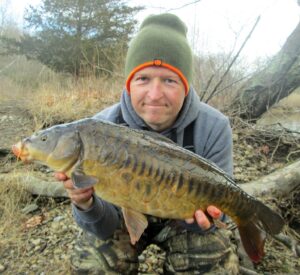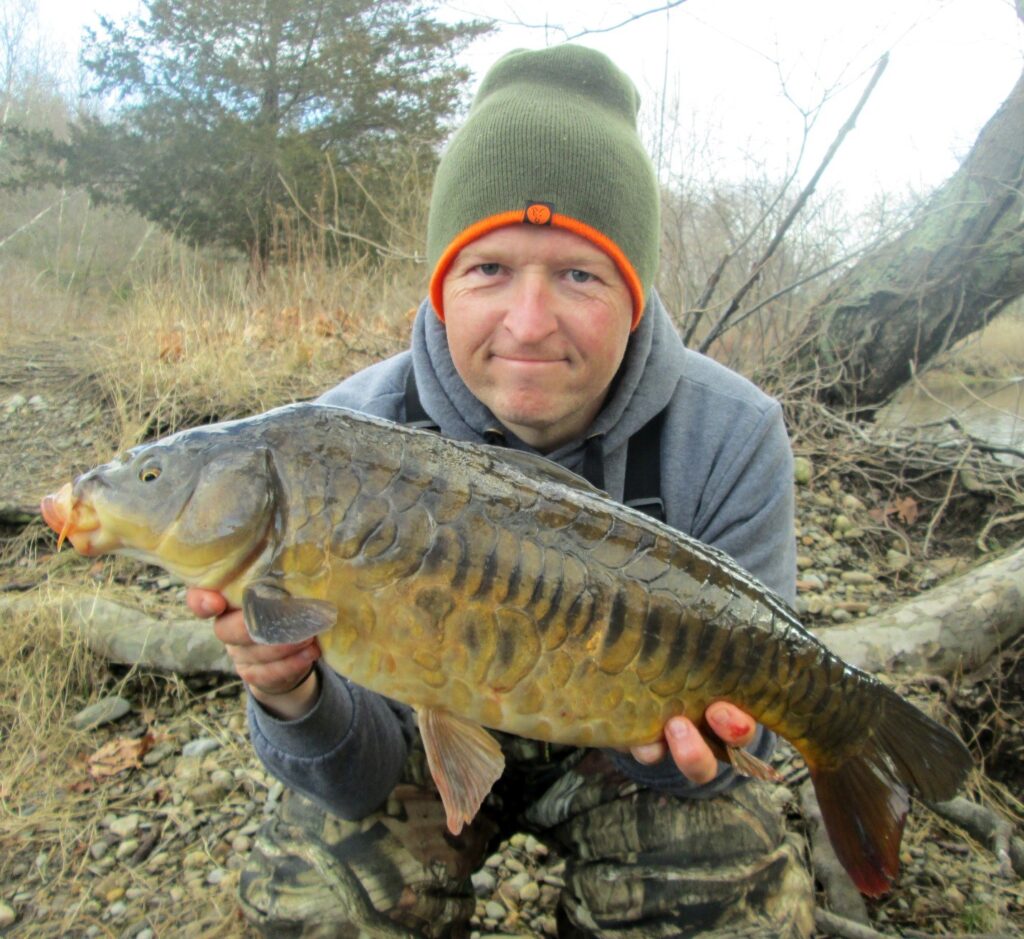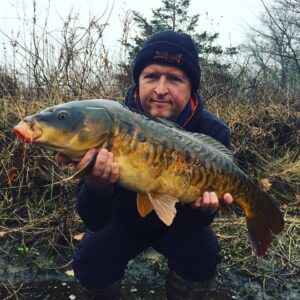
Before I ever started to target carp specifically I fished for other species both small and large. I’m sure many carp anglers started the same way; float fishing for small fish or throwing a lure around to see what would hit it. My own fishing journey started with canal perch, then progressing onto larger species such as tench, bream, chub and barbel before finally specializing with carp.
Along the way I fished many different methods with several of these methods suitable for many different species. One method I particularly enjoyed was fishing using a lighter rod where bites were registered on the tip of the rod. Dependent on the rod you are using and the specific end tackle arrangement this can be referred to as the quiver tip (light rod with adjustable soft tips), feeder fishing (using various swim feeders), swing tip (a tip attachment that swings, rather than bends) the bomb (use of a lead) and so on. For this particular article I’ll just refer to the method as feeder fishing, but basically I am referring to the use of a lighter rod set-up where the use of the tip of the rod is the bite indication method.
Why Change Methods?
Generally I will adjust the methods I am using to target carp based on several factors including; size of venue, size of carp, depth of water, feeding habits, time of year, weather patterns etc. Most of the year you will find me fishing for large carp and as such my methods are much more Euro-centric. I will be fishing with alarms, rod rests, bolt rigs and baits such as particles and boilies. However, when it comes to my winter fishing I like to be more mobile and also not limited to a static feeding approach. This is where the feeder comes into play.
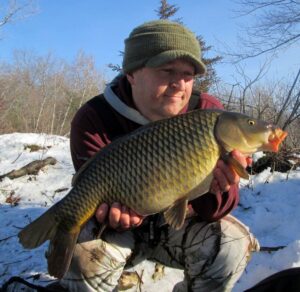
I decided to switch over the feeder rod tactics three or four winters ago. I was fishing a venue I have caught hundreds of fish from with regular carp tactics but with increased pressure I was seeing that the carp were very, very cute. They absolutely knew they were being fished for and most of the time, bite indication on a standard bolt rig was very finicky. It also coincided with a Christmas gift from one of my friends; a rod that I would usually be used to tame big chub and barbell. This would prove the perfect tool for catching wary winter carp over the next couple of years. I was also targeting carp in the 5-20lb range, but it is also possible to purchase stronger feeder rods that are designed for big carp.
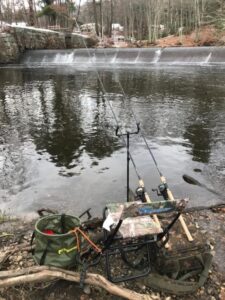
Equipment Used
Rods – My own rod is a 12ft through action (3 piece) Specialist. While it has no test curve stated, it’s approximately 1lb to 1.25lb in test curve. It will comfortably cast a couple of ounces of lead and so far I have landed fish up to 20lb’s in weight, although I have heard of an angler using the same rod in France for carp over 30lb’s!!
There are many ‘feeder’ specific rods you can purchase online, but you could also look for a 9-11 foot rod with a soft tip. Basically, you want the rod to have enough power to land decent sized carp but the tip of the rod needs to be soft enough to register the bite indication without too much resistance.

Reels – As the rods are lighter you need to drop the size of the reel so the set-up is balanced. You will be holding the rod more and will be much more active so a heavy reel will definitely be a burden. I use a couple of Abu Garcia CD 1000 reels, which I have had for several years but any small reel which holds about 100 yards of 8-10lb line will be sufficient. One thing to bear in mind is that you also want a reel with a smooth drag as this will help when playing the fish. Spending a little bit more on a quality reel will definitely be appreciated when you are playing a double figure carp.
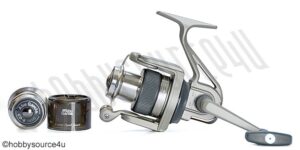
Line – I load my reels with 8-10lb mono, usually Berkley Big Game as it’s very tough and abrasive resistant but any decent mainline will suffice. For the hook-links I use a fluro-carbon line, usually in the 6-8lb bracket, depending on the size of the fish I am catching and also if I am fishing near to snags.
Hooks – As I am using lighter rods, reels and lines the hook sizes are also reduced. As I am fishing for hard fighting carp that can many times be over the 15lb mark I need a hook pattern that is strong and reliable. Most regular carp hooks do not go below a size # 10 so after some research I have settled on a fly fishing pattern, made by Mustad. These hooks are available in size # 10 all the way to # 20 and are very strong.
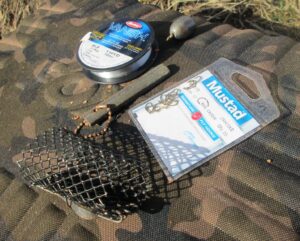
Feeders and Leads – Again, you can purchase swim feeders from Europe on many online websites and while these are purpose made, they are fairly pricey. Most of the time I am feeder fishing I am using a ground bait as well and the best feeder to use in this case is an ‘open ended cage swim feeder’. I can make dozens of these for only a few dollars simply by purchasing a sheet of metal gutter guard, some steel cable wire and either lead strips or cheap ½ to 1 oz flat leads. I also use basic non-lead sinkers in the ¼ to 1oz range which are easily picked up at any Walmart or sports store.
End Tackle Arrangements
Similar to the different swim feeders available there are also multiple ways you can set-up your end tackle arrangements. I’ll highlight the two set-ups I use the most below.
Loop Rig – Allows the feeder to move up the loop which minimizes the resistance when a fish picks up the bait.
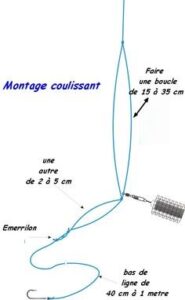
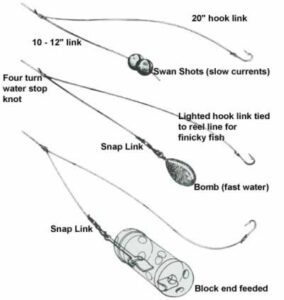
Bait Attachment
With the invention of the modern hair rig back in the early 1980’s carp fishing was revolutionized. No longer were anglers hovering over their rods attempting to hit ‘twitches’ and coupled with the bolt rig, carp fishing and hooking carp in general became a much easier and more consistent process.
For most of my fishing you will find me using modern approaches and as well as the hair rig I’ll also utilize heavy leads and bigger hooks. It’s the complete opposite when I approach my feeder fishing. Yes, I could use a hair rig, but remember, I am not attempting to have the carp bolt when it picks up the bait. In fact, quite the opposite! In theory, as the carp sucks in the bait I will see the indication on the rod tip and thus strike into the carp.
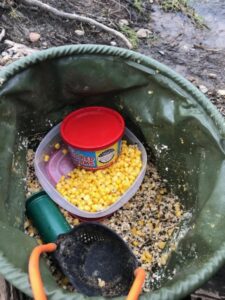
With this approach I use smaller hooks, in the size 10-14 range. As importing hooks specifically for feeder fishing is not a consistent approach I have found a few decent patterns of hooks in the fly fishing world. Specifically, I look for a strong wire nymph hook, usually with a curved shank pattern. You’ll be surprised how strong a little hook can be and I have landed many carp up to 20lbs on relatively small hooks.
Attaching the bait is a very easy affair, with one or two grains of sweetcorn nipped onto the hook. I also use other particles directly on the hook, such as chick peas, black eyed beans and maples peas but sweetcorn is truly the king of feeder baits!
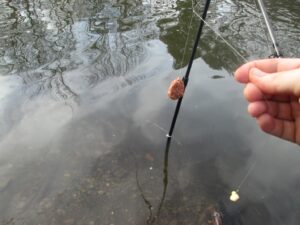
How to get Started
A typical session for me will range from 2-4 hours. I will arrive at the river and depending on the weather and fish activity I will put a little bait out before I start fishing. Usually, this will be 15-20 minutes prior to me setting up which will give the carp time to find the bait and hopefully start to feed.
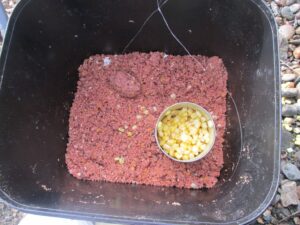
Once I make my first cast I will be looking not only for solid bite indication but also for any fish activity. In the winter the carp tend to be more localized and as such it may take several casts to locate the fish. Line bites and sharp hits are usually a good indication that the fish are willing to feed.
At this point I will feed with a little and often approach, catapulting in a few grains of sweetcorn and sometime sinking pellets with every cast. If bites are coming regularly then I will keep the same approach, but if they slow down I will either increase the feeding regime or stop it all together! It really depends on how active the fish are and what indication I am receiving.
On days when the fish are not playing ball, then I may shorten or lengthen the hook-link and at times drop to an very light lead, even touch ledgering where I am in direct contact and can ‘feel’ the carp pick up the bait.
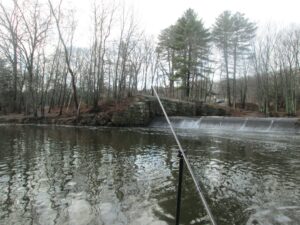
The beauty about feeder fishing is that due to the lighter set-up and lead arrangement you can recast regularly with little disturbance to the swim. You are also traveling relatively light so moving swims is also very easy. It’s not unusual for me to fish 3 or 4 different areas in only a few hours of feeder fishing.
However, the main draw for me is that playing the fish on a lighter rod is much, much more fun. It may take you longer to land the fish but I lose very few, even with light line and small hooks as the soft action rod(s) take the lunges and runs with relative ease. You really can’t help but smile as you are playing the fish, it really is that much fun.
